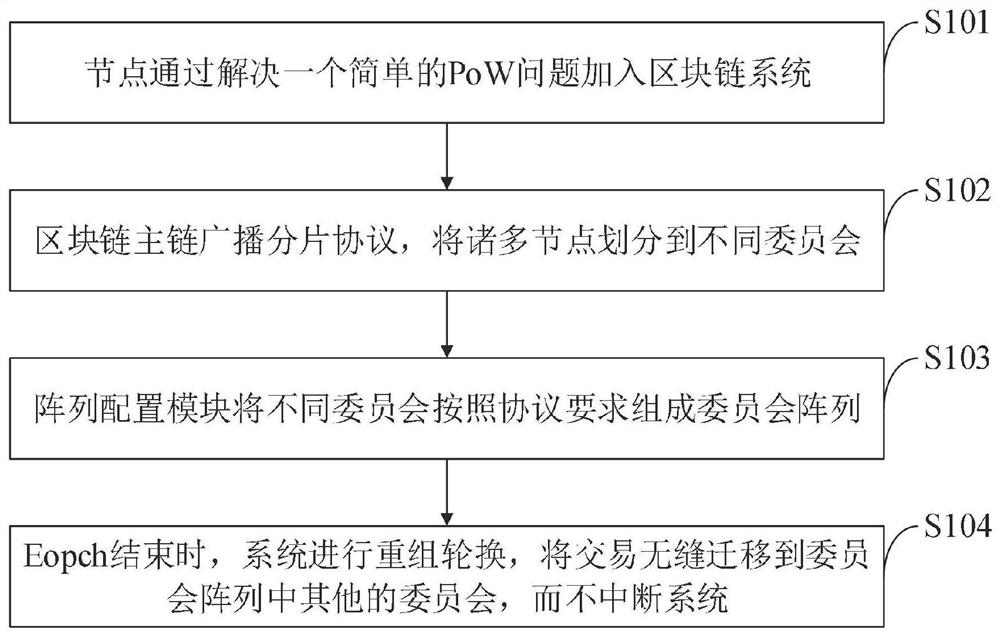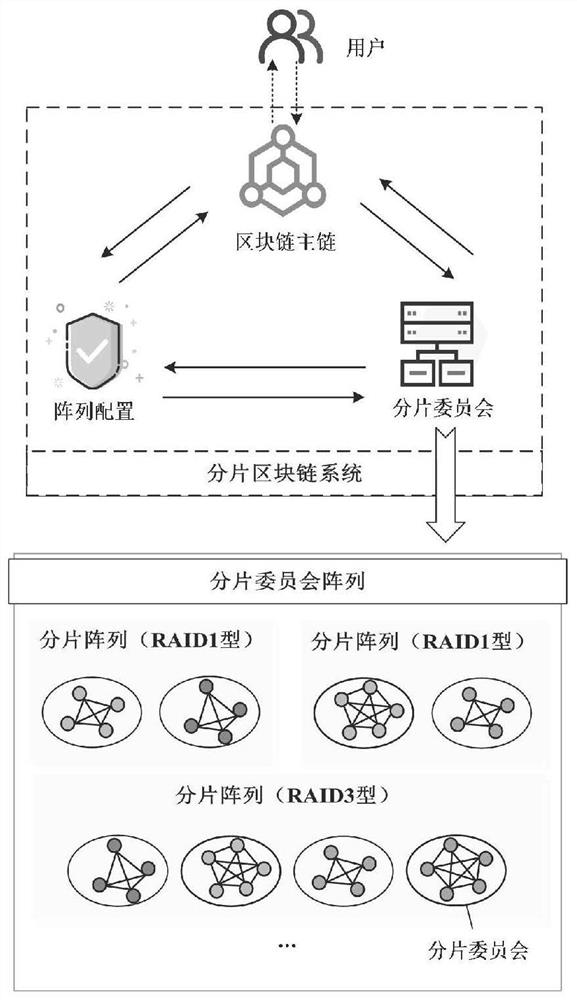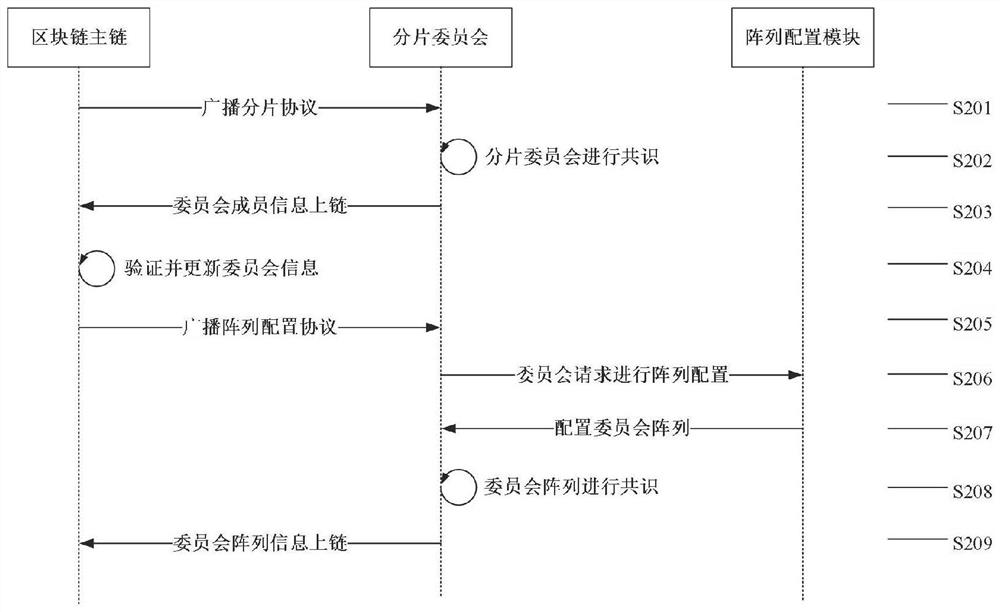Storage rotation method, system and device for block chain fragmentation system and application
A block chain and sharding protocol technology, applied in the field of block chain and block chain sharding applications, can solve the problem of single computing node with limited processing capacity of block chain system, limited single node computing capacity with limited transaction processing capacity, Problems such as system communication overhead and service interruption time are difficult to achieve the effect of reducing network load pressure, reducing service suspension time, and reducing service stop time
- Summary
- Abstract
- Description
- Claims
- Application Information
AI Technical Summary
Problems solved by technology
Method used
Image
Examples
Embodiment 1
[0071] Example 1: The overall scheme of the blockchain sharding array system
[0072] This embodiment designs a division scheme of the blockchain sharding system, and its processing flow is as follows: the main chain module of the sharding system verifies the desired nodes to prevent malicious nodes from creating multiple witch identities; the verification node joins the block After the chain system, according to the traditional sharding scheme, the nodes are sharded to obtain several committees; the committee array configuration module reconfigures the committees to generate a committee array; the main chain module distributes transactions to each committee array.
[0073] This embodiment also designs a storage rotation reset scheme for the block chain sharding system, and its processing flow is as follows: the main chain module of the sharding system detects the end of the current epoch life cycle of some committees, and requires the committee array to dissolve the correspond...
Embodiment 2
[0101] Example 2: Blockchain sharding array system under smart grid
[0102] The overall structure of the blockchain sharding array system is as follows: figure 2 As shown, the whole system is mainly composed of users, verification nodes, committees and committee arrays, main chain modules and array configuration modules. Corresponding to the smart grid scenario, each module has different representation forms, as follows:
[0103] The user corresponds to each electric meter, and each electric meter has a constant blockchain address (that is, public key hash) in the system, and the address records the user's remaining power balance;
[0104] The verification node corresponds to the infrastructure in the smart grid, that is, smart power equipment such as power stations, transformers, and sensors. These devices have more or less certain computing power and can be used to maintain the entire blockchain system; in addition, the verification node also Registration may be open to ...
Embodiment 3
[0109] Example 3: Joining of verification nodes
[0110] Before each node joins the committee, the blockchain system will verify it to avoid sybil attacks on the system by undistributed elements. For example, using PoW for verification, the node must be able to complete certain work before the system is allowed to enter, otherwise the node is not allowed to join the committee. Specific steps are as follows:
[0111] Step 1: After the node joins the blockchain system, it needs to broadcast the identity information (including but not limited to the node's public key, IP address, etc.) to every node in the system;
[0112] Step 2: The main chain module records the identity information of each node;
[0113] Step 3: The node splices each of its own identity information in a fixed order to generate a Hash value, and checks whether the first x bits are all zero. If it is not satisfied, it will continue to try the nonce value until a Hash with the first x bits all zero is generated...
PUM
 Login to View More
Login to View More Abstract
Description
Claims
Application Information
 Login to View More
Login to View More - R&D
- Intellectual Property
- Life Sciences
- Materials
- Tech Scout
- Unparalleled Data Quality
- Higher Quality Content
- 60% Fewer Hallucinations
Browse by: Latest US Patents, China's latest patents, Technical Efficacy Thesaurus, Application Domain, Technology Topic, Popular Technical Reports.
© 2025 PatSnap. All rights reserved.Legal|Privacy policy|Modern Slavery Act Transparency Statement|Sitemap|About US| Contact US: help@patsnap.com



